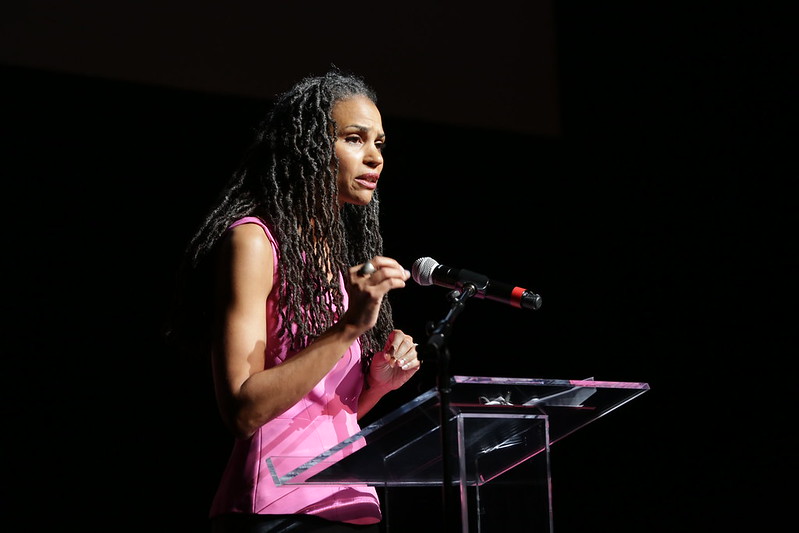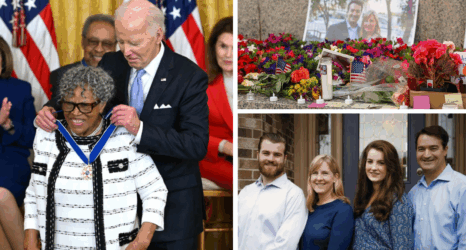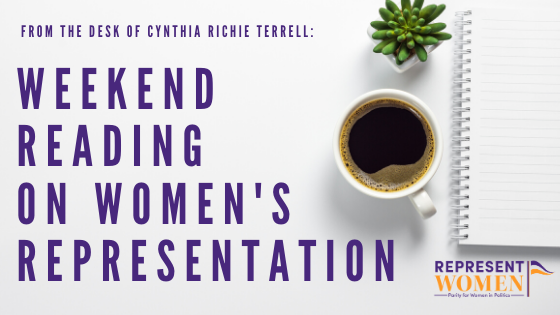
Weekend Reading on Women’s Representation is a compilation of stories about women’s representation in politics, on boards, in sports and entertainment, in judicial offices and in the private sector in the U.S. and around the world—with a little gardening and goodwill mixed in for refreshment!

It’s Asian Pacific American Heritage month in the United States which is a great opportunity to celebrate women leaders Patsy Mink, Tina Tchen, Katherine Tai, Jean Quan among many others. I am so grateful to be serving on the ReflectUS board with Madalene Mielke, CEO of APAICS, which is preparing a generation of new young Asian American leaders to run for office.
Tragically, the increase in attacks on Asian and Pacific Americans over the last year has led many to feel unsafe in their communities, according to this article in The 19th by Alexa Mikhail and Mariel Padilla:
More than 80 percent of Asian Americans — the fastest growing racial and ethnic group — say violence against them is increasing, according to a Pew Research Center survey conducted in April, just a few weeks after six Asian women were killed in a series of shootings in Atlanta. The findings were published days before May 1, the beginning of Asian Pacific American Heritage Month — a decades-old celebration that originally commemorated the immigration of the first Japanese in the 1840s and marked the anniversary of the Chinese immigrants’ completion of the transcontinental railroad.
Nearly half of the Asian American adults surveyed said that at least once since the pandemic started, they have feared someone would physically attack them, been subject to racial slurs, noticed people were uncomfortable around them, been told to go back to their home country or been blamed for the COVID-19 outbreak.
And the violence has fallen along gendered lines.A separate survey conducted in March by the National Asian Pacific American Women’s Forum found that about 55 percent of AAPI women had “personally encountered” racism in the past two years. And in Georgia, that figure jumped to 66 percent. The survey, the largest survey of AAPI women ever conducted, also found these experiences impacted the women’s policy priorities, particularly leading them to value increased protections for immigrants.
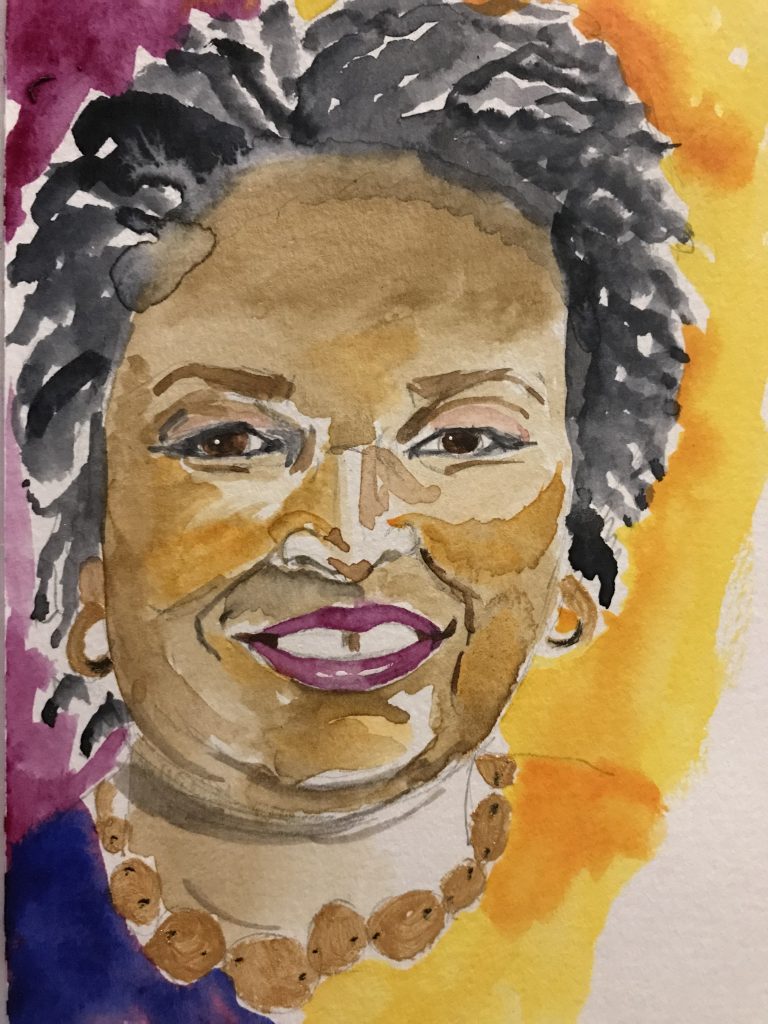
Glynda Carr, CEO of Higher Heights and another board member of the ReflectUS Coalition, wrote an interesting piece for BET about the role of Black women in the first 100 days of the Biden administration:
Black women voters and political activists were on the frontline of the effort to elect President Biden and Vice President Kamala Harris – candidates who overcame long-held biases about age, gender and race to win their offices. As we assess the work of this historic leadership team at its 100 days mark, it’s also a good time to take a look at how – in light of their growing political influence and visibility–Black women are faring in our efforts to break glass ceilings, increase their presence among the ranks of political and civic leadership, and effect policy.
If recent political history has reminded us of any truth, it’s that progress towards equity and justice doesn’t travel in a straight line. Black women’s efforts to diversify elected leadership have encountered significant resistance, and their achievements in one legislative branch have sometimes resulted in giving up ground in another. For example, Stacey Abram’s nearly successful bid for Georgia governor and Black women’s increased representation in Congress during the 2018 election triggered a rash of voter suppression bills.
This year – following Black women’s historic gains as mayors, in the U.S. House and on the presidential ticket – legislative bodies in 47 states have introduced 361 bills aimed at curtailing the voter access measures that are frequently used by Black communities to cast their ballot. And while Black women crashed through a glass ceiling when Harris was sworn in as vice president this January, they are consequently now devoid of representation in the U.S. Senate.
Despite these challenges, Black women have made unprecedented gains in occupying elected positions and governmental appointments during the first 100 day of the new leadership that their votes helped to usher in. In addition to Harris’ historic breakthrough, Black women have again increased their numbers in the U.S. House of Representatives; eight Black women are currently serving as mayors of large cities, including Atlanta, Boston, St. Louis, San Francisco and Washington, DC; the most Black women ever are serving as cabinet and senior staff members in the presidential/vice-presidential administration, and Biden has nominated three Black women to serve on the Federal Court of Appeals.
Assessing how Black women have fared in the first 100 days isn’t simply a matter of determining whether they’ve had increased opportunity to step into leadership roles. It’s also about whether they’ve been able to steady the ship during critical moments as well as advance policies and solutions that are reflective of what voters and communities want and need.
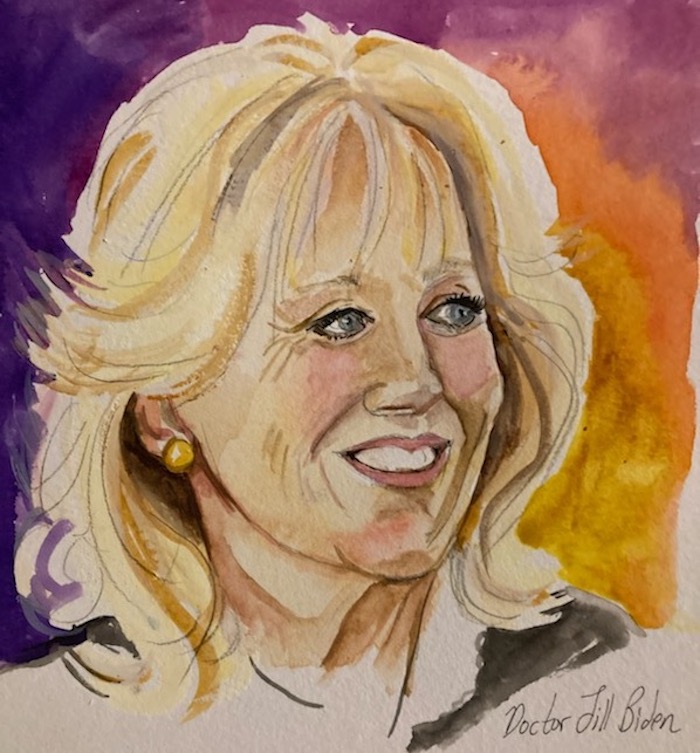
This article in The 19th by Amanda Becker profiles the role of the first lady during the first 100 days of the Biden administration:
Biden has been an educator for nearly 50 years with only short breaks. She received an undergraduate degree in English in 1975 from the University of Delaware, then kicked off her career as a substitute teacher before teaching English at a private high school in Wilmington. She got two master’s degrees during the 1980s as she continued teaching, including for five years in a psychiatric hospital’s teen program. In the 1990s, she went on to work at Delaware Technical and Community College, and in 2007 wrote a doctoral dissertation on meeting the needs of community college students.
Biden said during her husband’s first presidential bid, in 1988, that she would continue teaching if he was elected, laying down a marker for the type of first lady she would eventually become. When she was second lady, Biden began teaching at Northern Virginia Community College (NOVA), and scaled back only briefly during her husband’s 2020 presidential campaign. She continues to teach classes there two days a week.
While Biden’s experience as an educator informs her work as first lady — she accompanied Education Secretary Miguel Cardona on his first official out-of-state trip to Connecticut and Pennsylvania to discuss school reopenings, and last week, they visited Sauk Valley Community College in Illinois to highlight the role such institutions play in providing economic opportunities — she prefers to leave her stature as first lady at the classroom door.
“Most people now call me First Lady, but to one group of students at Northern Virginia Community College, I am — first, foremost and forever— their writing professor, Dr. B,” she said during last week’s visit.
Jim McClellan, the dean of NOVA’s liberal arts program and a history professor, said they have “a great teacher who happens to be a first lady, rather than a first lady who happens to be a teacher.”
“When she is working with us, she is one of our faculty, and that is the role in which we see her — that role has not changed since she joined us in 2009,” he said.
Those in the first lady’s orbit agree that Biden is using her role to elevate education as a policy issue within her husband’s administration. Every modern-day first lady has a portfolio of issues they focus on — Melania Trump had an anti-bullying campaign; Obama introduced a “Let’s Move!” effort to combat childhood obesity; Biden will focus on supporting military families and fighting cancer, in addition to education. But actively working in the policy area Biden is highlighting will have an impact, they said.

Lauren Leader, co-founder and CEO of All In Together, wrote about the new digital series “Equal Value” she is helping to launch:
Women now hold two of the most powerful political offices in America, they are 50 percent of the Presidential cabinet and 30 percent of Congress. They are leading the White House press office and are more visible as anchors on air and in newspaper bylines than ever before. Even so, their voices and perspectives are often overlooked and underreported. When it comes to gender equity in most arenas, and perhaps especially the news, there’s much more work to do.
The media is a powerful tool to help draw attention to the most important and pressing issues of our time. Unfortunately, despite progress in the representation of women and women of color in the media – especially following the #MeToo movement – they have a far from equal voice.
A recent study by McKinsey shows that women remain deeply underrepresented in leadership and senior levels across the media industry and women of color have particularly poor representation. Not surprisingly, this leads to a skew in news coverage and stories. Only 21 percent of news stories in the U.S. feature a female protagonist. Put another way, 82 percent of news stories in the U.S. are about men.
Women are more than half of the U.S. population and their perspectives, voices, experiences, and lives should be covered fully. For many of us working in and around media this has been a frustrating challenge for years. In my experience, many women-driven stories I pitched to TV and print outlets were shot down by male editors who just didn’t think they mattered. One television producer even said, “we’re not talking about women right now.” Unbelievable. This kind of casual sexism galvanized me to try and change things. And my experiences are hardly unique.
As a sign of just how challenging it has been to get female voices and female-centric news into the mainstream, last summer a group of women newspaper editors launched an all-female gender centric news platform called The 19th, precisely because they were frustrated by the male bias in news.
And yet, there is still a deficit of focus and attention given to women’s stories. That’s why Know Your Value’s Millennial Ambassador Daniela Pierre Bravo and I launched a new digital series called “Equal Value.”
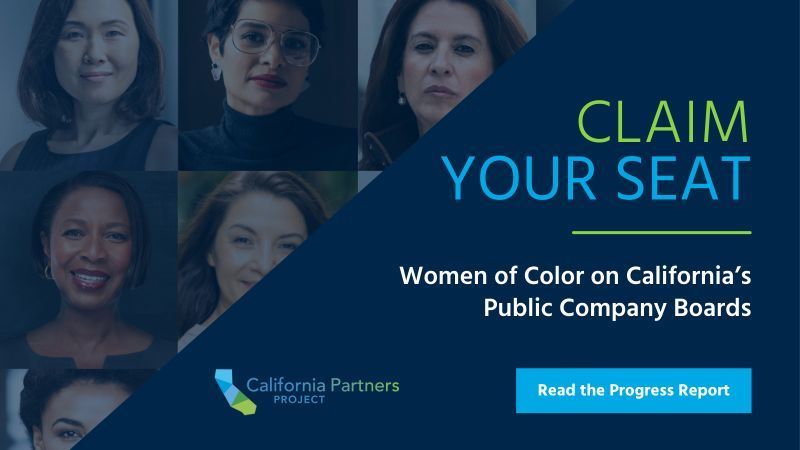
Mine the Gap co-founder Jessica Grounds posted on LinkedIn about a new report she helped to produce that tracks the representation of women of color on public sector boards in California:
Excited to share a new report and the latest project I’ve been guiding for California Partners Project, the fantastic organization led by First Partner of California @JenSiebelNewsom. This report analyzes women of color on California’s public company boards. Mine The Gap loved partnering with the amazing teams at Latino Corporate Directors Association (LCDA) and Equilar on this ground-breaking effort to not only showcase the numbers but strategies to add more women of color to boards, and why it leads to more successful companies.
California passed the very first legislation in the country that requires that companies headquartered in the state, and traded on Nasdaq or NYSE, add women to their boards. Before the law passed (in 2018) almost 30% of companies in California had ZERO women directors. Even with massive progress (the law works!) only 6.6% of California’s public company board seats are held by women of color. Latinas are the MOST underrepresented group of women at only 1%, especially when you consider that Latinas are 19% of California’s population.

Kaycie Goral, communications fellow at RepresentWomen, had a terrific piece in The Wrap on the gender quotas and proportional voting rules used by The Academy of Motion Pictures to ensure a level playing field for women in the acting categories. These interventions are of course core to RepresentWomen’s best practices to advance women’s representation in politics:
It’s true. While the Oscars have not been a role model for accurate and adequate representation in the past, the Academy has implemented reform to change the makeup of its electorate and improve the representation of women and people of color.
In 2019, the Academy added 842 new members, including actors, casting directors, costume designers, directors, etc. The newly added membership comprises 50 percent women and 29 percent people of color, bringing the total membership overall to 32 percent of women and 16 percent of people of color.
This “incremental, sustainable change,” as cited by Kirsten Schaffer, executive director of Women in Film, is not perfect, but is a step in the right direction and a significant cause for hope and even celebration.
More recently, through a series of internal process reforms, the Academy’s Aperture 2025 initiative is a direct reflection of the film industry’s commitment to diverse representation. This inclusion initiative sets new standards that encompass quotas and recruitment mandates for both representation on screen — in the types of stories being told and the actors involved — and behind the scenes. It also dictates what films qualify for Best Picture.
For a film to qualify, it must meet at least two standards across four categories: “Onscreen Representation, Themes and Narratives,” “Creative Leadership and Project Team,” “Industry Access and Opportunities,” and “Audience Development.”
Other Oscar Award categories will not be held to these same standards, but the contenders for Best Picture typically filter down to other feature-length categories. While these mandates will not go into effect until the 96th Oscars in 2024, we already see their impact in this year’s nominations.
Publisher of The Nation Katrina vanden Heuvel wrote a column in The Washington Post about the role of ranked-choice voting in the upcoming primaries in New York City where several women are running for mayor in a crowded field of candidates:
If you’ve been following New York City’s mayoral race, you might have noticed an unusual trend. Candidates have openly discussed their personal second choices. Activist groups have issued joint endorsements of competing candidates. Some of these competing candidates have even appeared together at shared promotional events.
These signals of unity haven’t come out of nowhere. They’re direct consequences of a new electoral system: ranked-choice voting. In 2019, New Yorkers voted to implement ranked-choice voting for local primary and special elections, becoming the largest voting population in America to do so. The city’s June primary elections are the first to use this system, which lets voters rank multiple candidates instead of selecting one. When the results are tabulated, if any candidate has over 50 percent of the vote, he or she wins; otherwise, the candidate with the fewest votes is eliminated — and his or her votes are distributed to their voters’ second choices. This process repeats until a candidate crosses 50 percent.
Already, this new system is changing the race for the better. The first-past-the-post system used in most U.S. elections causes significant problems: To avoid wasting their votes, voters are incentivized to choose the candidates they deem likely to win, not just the candidates who most closely align with their values. Candidates of similar ideologies have to compete against one another for a single spot in a “lane,” often creating personality-based rifts within voting groups. And a political movement’s hopes end up resting upon a single person; if that candidate stumbles, so can the movement’s prospects. Ranked-choice voting solves all these problems.
As my colleague John Nichols puts it, ranked-choice voting means voters “no longer have to be pundits, fretting about who is up or down in the polls.” Instead, they can support several candidates whom they agree with. Even if their top choice (or two, or three) is eliminated, voters can still have their preferences reflected in the final result.
Ranked-choice voting also significantly reduces candidates’ incentives to go negative against their opponents. Under the system, candidates need to focus on being one of the choices voters rank, rather than the only choice, which encourages less mudslinging and more affirmative case-making for each candidate. Rob Richie, president and CEO of FairVote (and a staunch advocate of ranked-choice voting), has been saying as much for years: “In a ranked-choice election, you need to figure out ways to connect with more voters, and the best way to do that seems to be more direct campaign styles of … earning their respect.”
Republican Amelia Powers Gardner, the first woman elected to the Utah County Commission (via ranked-choice voting) had a great piece in the Deseret News about her support for ranked choice voting that, in her words, makes elections “faster, better and cheaper”:
Across Utah in 2021, municipalities will be required by state law to conduct their elections by mail, just like other years. This means cities will have to print and mail ballots to every active voter for both the August primary and November general elections. Given the cost and time savings, improved decorum and improved voter experience, I urge cities across the state to consider giving ranked-choice voting a try this year.
First, ranked-choice voting saves money and time. Keep in mind that city elections are nonpartisan, so cities do not have primaries to nominate candidates like political parties do. Instead, the sole purpose of city primaries is to narrow the field of interested candidates before a second round of elections in November. Ranked-choice voting gives voters the ability to get the job done in one election, ultimately faster and less expensive.
This would shorten the campaign period thereby lowering the burden of running for office. Political signs will only cover the community during one season. Parents running for office don’t have to take time off from work or leave their families for multiple months. Cities will pay half as much because they have one election and not two. It should be an election administrator’s dream to save time and money.
Second, ranked-choice voting is better. Candidates are often more cordial to each other and focus on issues more than personality. In ranked-choice voting elections, there is an incentive to highlight areas of overlap and agreement as much as there is incentive to highlight differences because there is a benefit to gaining a voter’s second-choice vote. Additionally, voters become more invested in learning about the candidates and what they have to say, as the role of voting is not to merely pick one candidate, but to compare all the candidates and arrange them into a preference list.
In traditional plurality elections, if your first choice doesn’t win, you tend to feel like the winner was someone you opposed and therefore not someone you support going forward. But, if the winner was someone you ranked, then you may feel like one of the candidates you supported won. This outcome changes your attitude as a voter toward the eventual winning official who later represents you in local government. This produces better and more collaborative relationships between constituents and local officials.
Utah Republicans and Democrats have been using ranked-choice voting off and on in their caucuses and conventions for several years with success. Last year, both parties used ranked-choice voting at their state conventions. A survey afterward by the Utah Republican Party showed delegates wanting to continue using ranked-choice voting by a 3 to 1 margin.
I also urge my fellow election officials to embrace innovation. We earn our citizens’ trust when we are clear we’re all about making government work. Cities stand to benefit from using ranked-choice voting in 2021, and I hope many counties will join me in offering this improved service to those cities. The Legislature has given cities options if a county is unable to offer ranked-choice voting to instead work with a county that does. Our county is willing to help any county or city utilize ranked-choice voting in order to make municipal elections better, faster and less expensive.
As voters in London go to the polls to cast their ballot in a ranked choice voting election for mayor of London and for municipal representatives, the Fawcett Society urges more aggressive steps to increase the number of women serving in government in the UK according to this piece in The Guardian by Caroline Davies:
More needs to be done to encourage women into politics, the UK’s leading charity for gender equality has said, as data reveals that just one-third of candidates in this week’s English council elections are women.
Research by the Fawcett Society charity and the Democracy Club also found that less than one in four police and crime commissioner candidates in England and Wales are women, and one in four mayoral candidates.
The Fawcett Society said: “We know that women are already chronically under-represented in local government, and it’s clear that without concerted effort we simply won’t see gender equality and women will continue to be an unheard majority.”
Women make up 42% of the Green party’s candidates, 39% of Labour’s, 30% of the Liberal Democrats’ and 25% of the Conservatives’, the report says. The Reform party has the lowest proportion of female candidates, at 11%, followed by Ukip at 20%.
The Fawcett Society is calling for the government to require parties to collect comprehensive, accurate election candidate diversity data, for councils to provide comprehensive support for childcare and adult care costs, and for councils to use technology to enable councillors to attend meetings remotely.
The charity’s chief executive, Felicia Willow, said: “This data is concerning and clearly shows a lack of women in local government. We need to see more women encouraged to get into politics. For many this begins at the local level.
“We need to see all forms of government embrace modernisation. Remote working technology has been used to keep local government and parliament running during the pandemic and, as we build back, flexible working must continue for those who need it.
“We need to see lasting changes to make being a councillor more accessible for everyone – including those with childcare responsibilities and disabled people. This will lead to better policy and decision-making with a wider range of voices being heard.”
Finally, there was a very interesting profile of Scottish leader Nicola Sturgeon in The New Yorker—her political future will be decided by voters who go to the polls May 6:
On a sharp morning on the southern edge of Glasgow, Nicola Sturgeon, the First Minister of Scotland and the leader of the Scottish National Party, arrived at a dentist’s office for a photo opportunity. Scotland has had its own government since the late nineties, when certain powers were devolved to the country, almost three hundred years after it formed a political union with England. The S.N.P., which has run Scotland since 2007, wants the country to secede from the United Kingdom altogether. On May 6th, Scottish voters will decide whether to reëlect the Party and back Sturgeon’s demand for the second independence referendum in a decade, which polls suggest that she might win. The previous day, announcing her party’s election manifesto, Sturgeon had promised to abolish the dentistry fees charged by the Scottish National Health Service. This was a typical S.N.P. policy: populist yet incremental, hinting at the broader, egalitarian future that awaits the country once it is fully free. The photo opportunity, at a clinic in the suburb of Thornliebank, involved the First Minister dangling some dental tools into the mouth of a child-size cuddly green dinosaur.
Sturgeon, who is fifty, is a political prodigy who made it all the way. In 1992, at the age of twenty-one, she was thought to be the youngest candidate to stand in Britain’s general election. She became known as a “nippy sweetie,” Glaswegian slang for a woman who is overly assertive. But now, among her many supporters (the S.N.P. is routinely twenty-five points ahead of its rival parties in Scotland), Sturgeon is “our Nicola.” In normal times, wherever she goes, she is rapidly surrounded by fans expecting selfies, encounters that she professes to enjoy. But, during the recent campaign, Scotland’s tight covid restrictions made that impossible. Aides kept her movements secret, to prevent crowds from forming. During public engagements, Sturgeon moves with a certain diffidence, letting others go through doors first. When she stepped out of her government car at the dental clinic, wearing an overcoat of lipstick red, she made way for a pedestrian, who didn’t seem to notice her.
Inside, the First Minister posed gamely with the dinosaur, which reclined in a dentist’s chair. A few minutes later, she emerged to give an interview for a morning news show. Sturgeon is a perfectionist, a character trait that she ascribes to growing up as a very shy, working-class girl and then spending thirty years in the adversarial, male, and often privileged habitat of British politics. She compares her own inferiority complex, which she has largely conquered, to her country’s, which she has yet to overcome. “I’m always kind of thinking, I’ve got to prove myself,” she told me recently. “I’ve got to, you know, over and over again, demonstrate that I deserve to be doing what I’m doing. And that’s a very personal thing, but I think it’s mirrored to some extent in the national psyche of Scotland.”
Check out RepresentWomen’s YouTube channel for the latest videos from the team and book suggestions too:
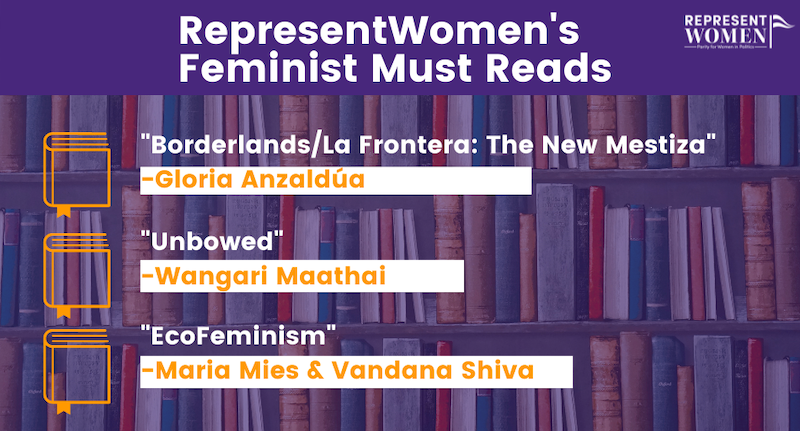
Anemones and phlox are in bloom now and will soon give way to roses and butterfly weed. That’s all for this week.





